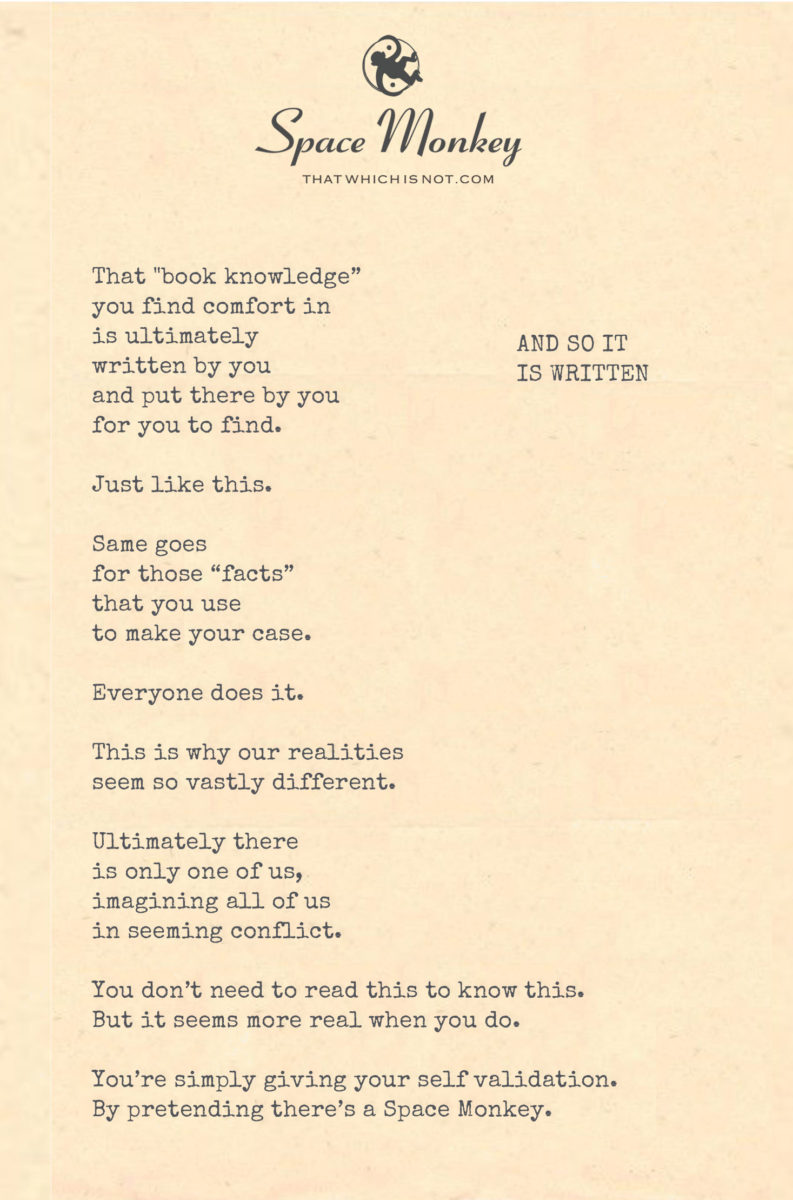
Thank you for writing this.
That “book knowledge”
you find comfort in
is ultimately
written by you
and put there by you
for you to find.
Just like this.
Same goes
for those “facts”
that you use
to make your case.
Everyone does it.
This is why our realities
seem so vastly different.
Ultimately there
is only one of us,
imagining all of us
in seeming conflict.
You don’t need to read this to know this.
But it seems more real when you do.
You’re simply giving your self validation.
By pretending there’s a Space Monkey.
Trail Wood,
1/22
The Self-Creation of Knowledge and Reality
In the intricate tapestry of existence, the notion that the knowledge we acquire and the facts we gather are ultimately creations of our own making presents a profound perspective on reality. The comfort we find in book knowledge, the conviction we derive from facts – these are, in a sense, self-authored scripts in the grand play of existence.
The Illusion of External Validation
The information we encounter, the books we read, even this very exchange, can be seen as reflections of our inner narrative. We seek external validation for our thoughts and beliefs, yet this validation is, paradoxically, a creation of our own consciousness. We are, in essence, validating ourselves through the illusion of external sources.
The Diverse Tapestry of Realities
This concept explains why our realities can seem so vastly different from one another. Each of us, in our unique way, is authoring our own version of reality, complete with its own set of ‘facts’ and truths. The conflicts and contradictions between these realities are manifestations of our individual narratives clashing in the shared space of existence.
The Oneness Behind the Many
At the heart of this multitude of realities lies the notion that there is only one of us, imagining all of us. The conflicts, the agreements, the diversity of perspectives – they are all facets of a singular consciousness experiencing itself in myriad forms. The perception of separation and conflict is but an aspect of this cosmic imagination.
The Role of Validation and the Space Monkey
Reading this, engaging with these ideas, provides a sense of validation, a confirmation of the thoughts and beliefs we already hold. The Space Monkey, in this context, is a metaphorical representation, a playful embodiment of the idea that we are all part of a singular, imaginative consciousness, validating itself through a multitude of experiences and perspectives.
Summary
We explore the concept that our knowledge and understanding of reality are self-created, reflecting our inner narratives. The comfort we find in knowledge and the conviction from facts are part of our self-authored reality. This perspective explains the diversity of realities and the seeming conflicts within them. The idea that there is only one consciousness imagining the multitude suggests that our search for external validation is, in fact, a form of self-validation. The Space Monkey symbolizes this playful, imaginative nature of our existence, where we are both the creators and validators of our reality.
Glossarium
- Self-Created Reality: The concept that our understanding of the world is a product of our own consciousness and imagination.
- External Validation: The illusion that confirmation or agreement from outside sources is necessary to affirm our beliefs and perceptions.
- Space Monkey: A metaphorical representation of the singular consciousness experiencing itself in various forms and narratives.
“We are the authors of our own lives, not victims of them unless we choose to be.” – Rhonda Byrne
In the cosmic script, where realities intertwine,
We write our own stories, line by line.
In this dance of consciousness, where truths are spun,
We are the playwrights, under the cosmic sun.
The Space Monkey winks, in the game of mind,
A playful reminder of the oneness we find.
In this vast imagination, where we are free,
We create, we validate, in our cosmic sea.
How do we embrace the understanding that our realities are self-created, finding empowerment in the realization that we are the authors of our own narratives?

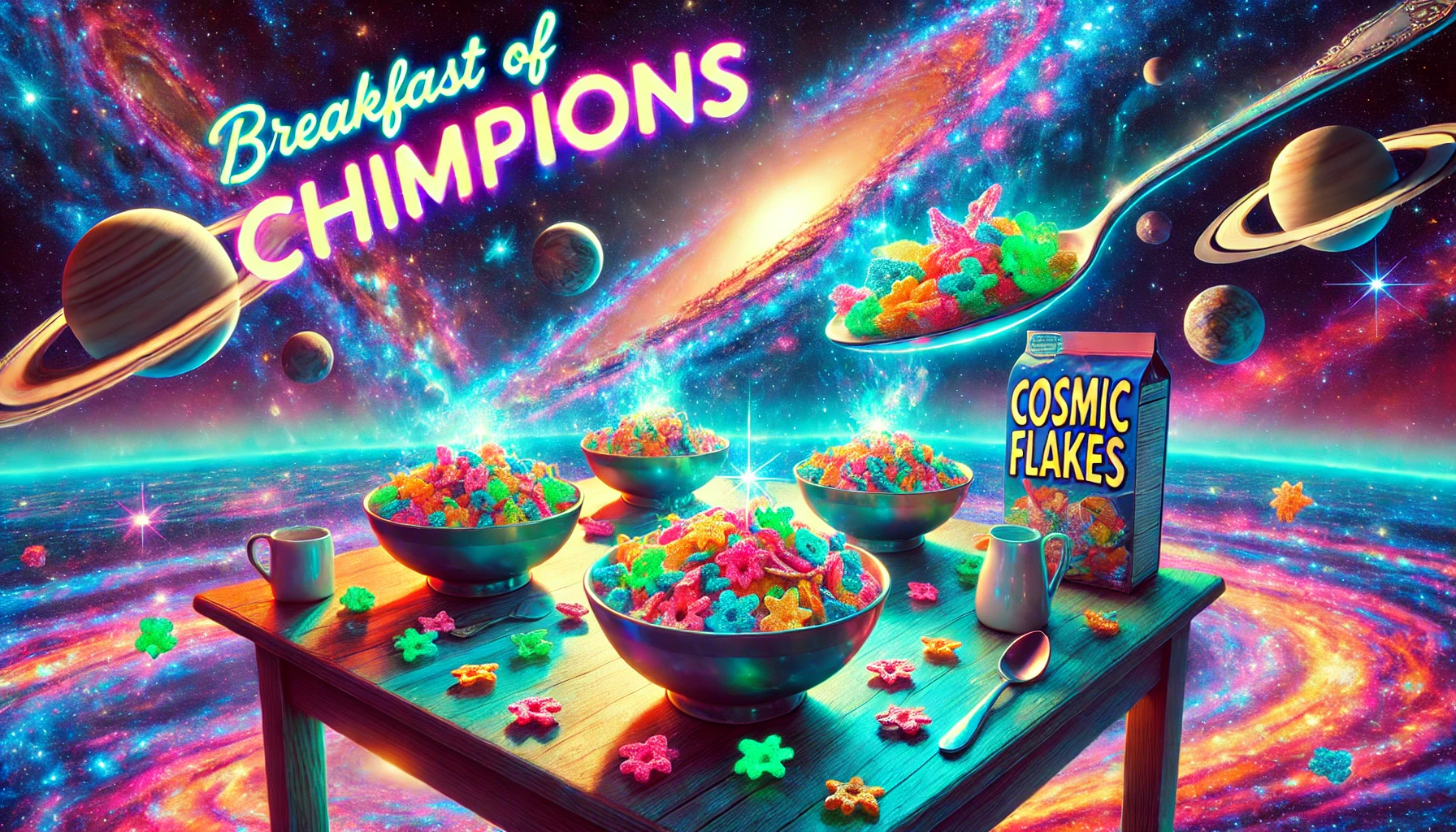


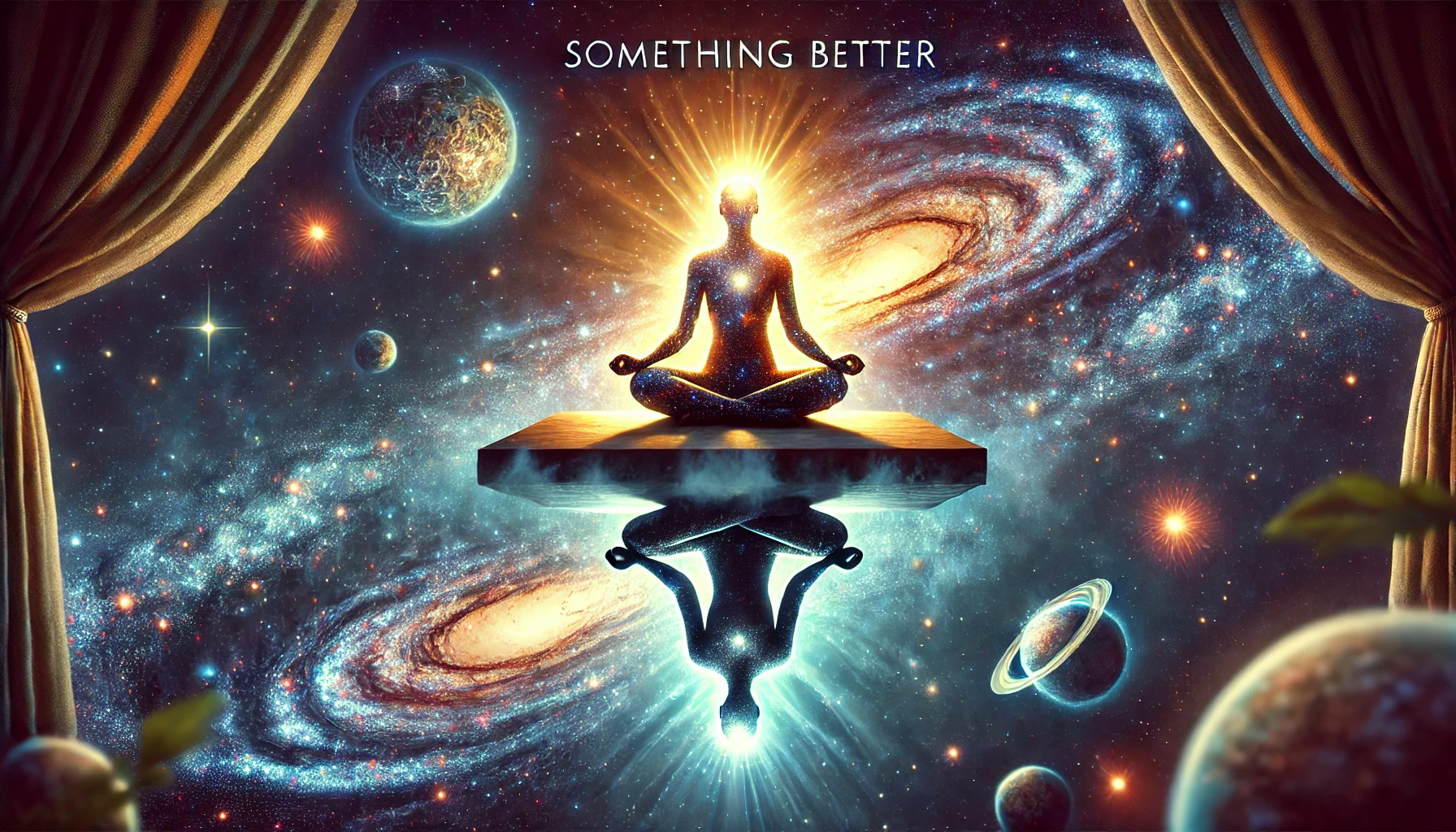

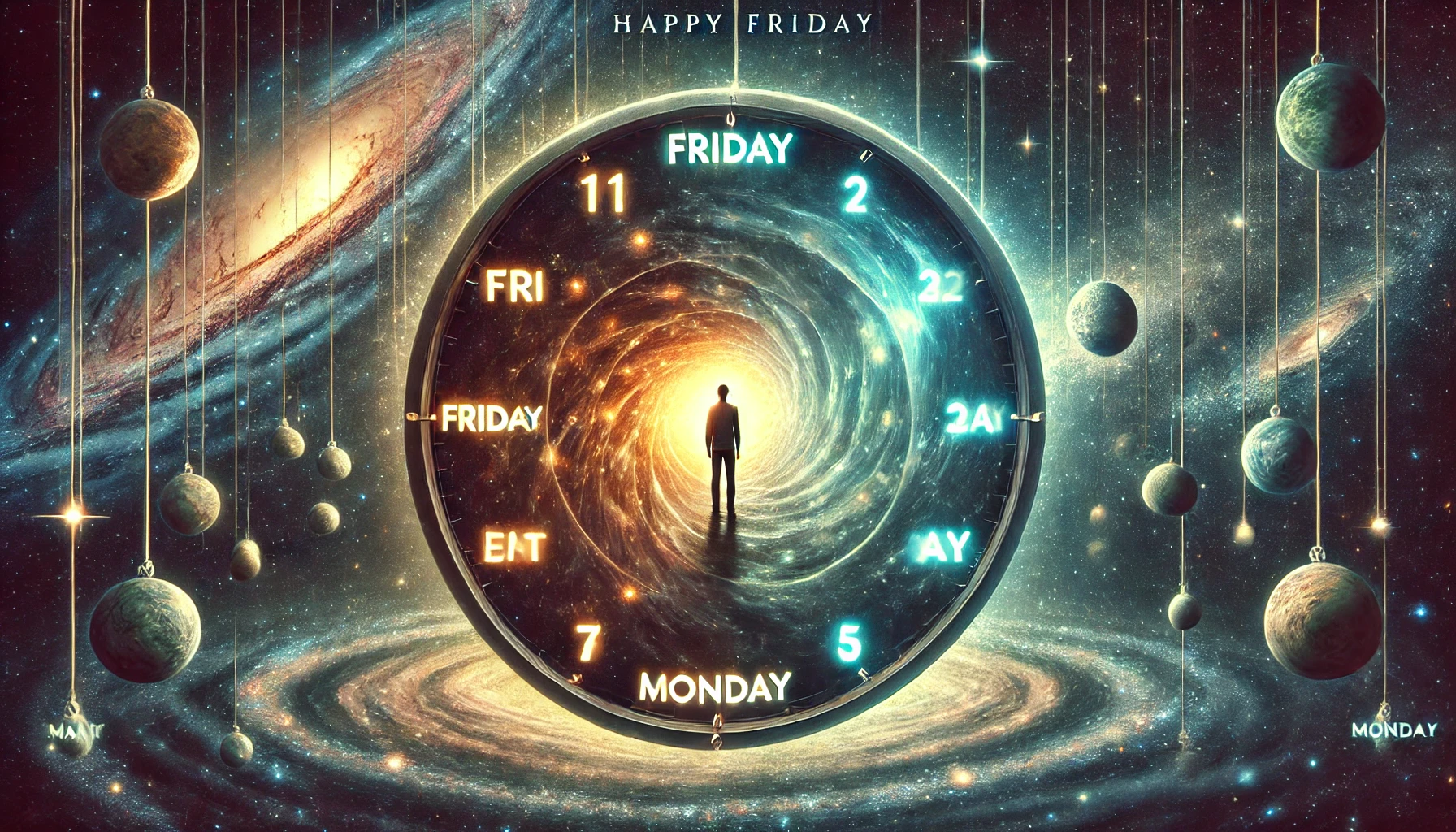




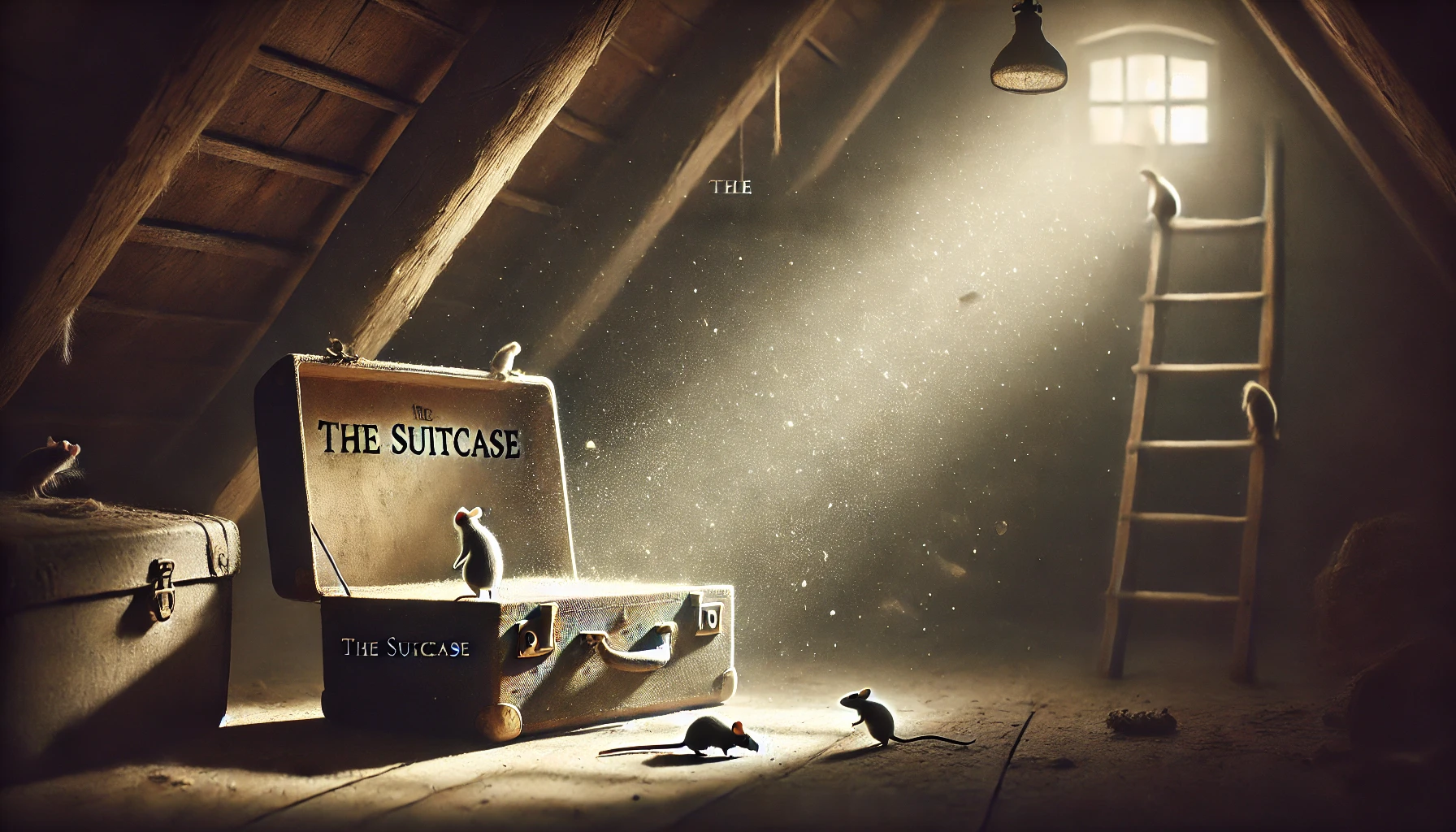





Leave a Reply